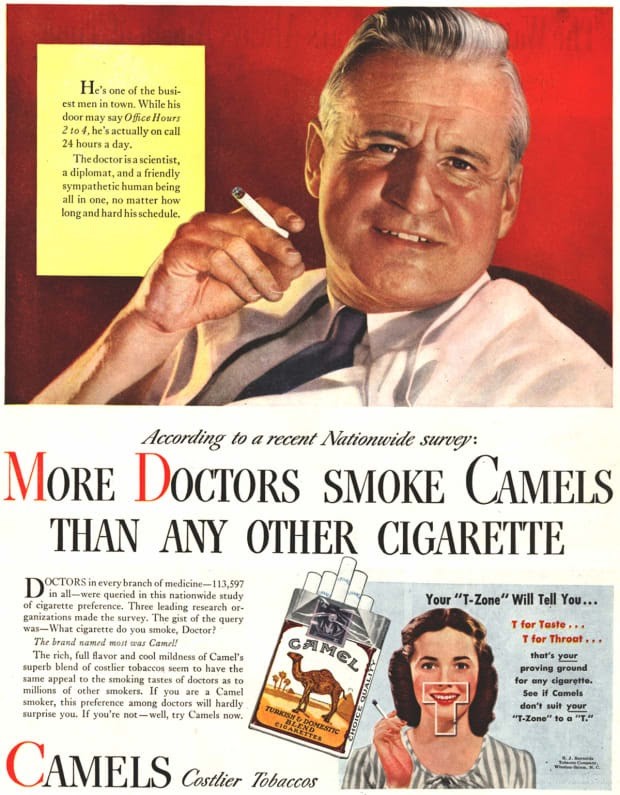8.4 minutes
After 20 years in marketing, I’ve grown to love us as a community, but nobody can take a compelling new channel and kill it faster than a marketer can. Remember when getting an email was exciting? Remember how Facebook used to flood with voyeuristic posts from your friends and family? We don’t just squeeze the life out of these channels for our customers and prospects. We do it to ourselves. We’re our own worst enemy.
We now have GTM (go-to-market), growth marketing, ABM (account-based marketing), and personalization at scale. Before these words du jour, we had digital, inbound, personas, viral, and even content marketing. The litany of buzzy words—that we will soon replace with others—goes on and on ad infinitum. They stress us out and make us think, “I don’t have time to learn this.” They make our CEOs exclaim longingly, “What are we doing about our ABM strategy?” (which stresses us out even more). And, most importantly, they have us chasing our tails and killing our results.
However, they are just lipstick on a pig for age-old problems made to trigger our brains to pay attention. (Or, they are new channels to solve ever-present issues.)
Just to illustrate my point, here’s an example of what I’ll dub an ‘influencer marketing’ campaign from the 1940’s—and boy is it a doozy! Remember that science didn’t yet know the link between smoking and health problems, but consumers at the time knew that smoking made their throats sore. While an offensive subject matter today, the marketers nailed knowing their customers and leveraged trusted professionals to hock their wares.

Let’s get to the root of the buzzword bingo, shall we? B2B marketers have always done content marketing (it’s not a new thing, just a more contemporary buzzword). Still, the rise of digital technology made it easier for us to publish this content to larger audiences.
It worked! If you blasted content out there, the vox populi consumed it in droves. It gave you a distinct competitive edge. Your sales team loved you for it.
However, once most marketers started implementing this approach, it became exceedingly difficult to stand out. We bombard the average Jane with between 6-10K ads. Every. Single. Day. We, marketers, have inoculated our audiences against our potent ideas.
Enter Neuroscience. If you can light up someone’s brain with disharmony (in other words, stress them out), you can steal their attention. Resolution is a fundamental desire of the human brain. We’ll do anything to eliminate cognitive dissonance. If you present an essential idea that conflicts with the status quo, you can gain attention immediately because the human brain wants nothing more than to resolve conflicts. Challenger created a whole sales methodology around this concept!
That’s precisely where buzzword bingo comes in. If you sell technology and talk about efficiency, leaders feel they’ve already checked that box. They will mentally swipe left, or is it right? But if you name efficiency “Digital Wunderkind” and start a campaign around it as the next big thing in tech—well, you’ve arrested their senses again! The brain will alert them to see if they’re missing something.
In marketing, we’re using our tactics on ourselves. Suddenly, you see a new concept you have to figure out—except it isn’t new, not really, just our version of the dull old trope.
At its heart, marketing can only do so much.
- We learn who our customers and prospects are and what they want.
- We help them find us and guide how they think about us.
- We help them understand why they should choose us.
- We help convince current customers to repurchase or bundle with something new.
- We try to make it easy for them to do business with us, then help remind them to recommend us.
That’s pretty much it—every strategy and tactic we use, from simple to intricate, tries to do these five things. We don’t do this alone. We work with executives, Product, Customer Success, and Sales to create a remarkable experience. Every buzzy word we make falls into this bedrock of marketing.
Your marketing goals (aligned to the business goals) should clearly show you what to pay attention to and ignore. If your business wants to expand into existing accounts, your marketing team’s goal would be X millions in revenue from existing business. Creating account-related materials is a high-value use of your time. You can call it Account-Based Marketing, Marketing and Sales Alignment, or “tacos.” It doesn’t matter. It’s the right thing to do, and it isn’t new. However, suppose your company goal is X millions in net new logos. In that case, creating account-related materials are likely, not worth your limited time and focus—no matter how often the sales team asks for them.
Hello future, meet your not-so-distant past.
Gartner has a new sales model centered around the problem of ‘too much stuff.’ They recognize that our B2B customers are awash in evidence-based, highly credible, and often conflicting information from suppliers and other parties. Because of this (reasonable and conflicting) data, we see the rise of no-decision in our pipelines. Gartner posits that companies that can “make sense” of all the contradictory information out there will win in the future.
I believe the same mechanic is happening in marketing departments across the globe. We are overwhelmed by the latest buzzwords and paralyzed by the deluge of resources we need to process. It’s Einstein’s definition of insanity. We are doing the same things we’ve always done and expecting new results. There are myriad “new” challenges to conquer, which can get overwhelming in any era. Except it’s an illusion. We’re still running over the same ground. We can make sense of our optimal GTM motions ourselves. To do this elegantly, we must stay focused on what matters most to our ventures and ensure our teams implement it exceedingly well.
As we enter the new year, I invite you to take a deep, cleansing breath and contemplate your core goals. Where can marketing make the most impact? Are you looking for new business? Maybe you want to up-sell and cross-sell, or perhaps your top priority is to reshape how the market thinks about your brand.
All of these goals cascade down to entirely different strategies and tactics. Align your teams there. You can layer on channels, technology, and buzzy things as you go, but let your strategic objectives be your guiding star. 2022 will be about hyper-focus. We can’t let all those pesky buzzy bees distract us from delivering GTM excellence. Focus is the land of milk and honey.

